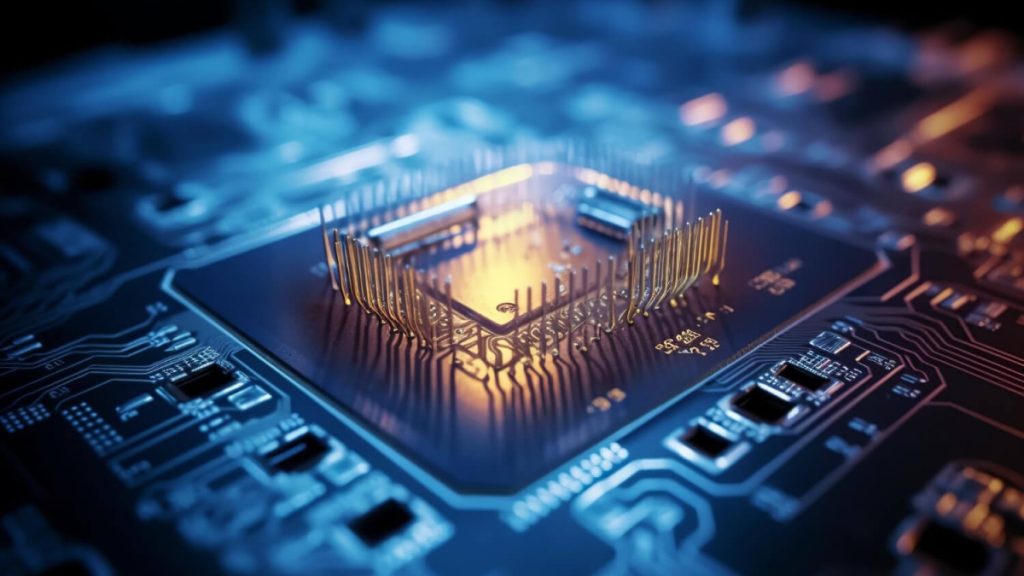VLSI technology is rapidly evolving in 2024, driven by advancements that focus on making microchips faster, more efficient, and smaller. Key trends include the rise of 2nm and 3nm chip technology, enhancing chip density and reducing power consumption for high-performance devices. AI and machine learning integration into VLSI design is improving automated testing and optimization processes. 3D integrated circuits are becoming more prominent, allowing for better chip stacking and reduced latency. Additionally, RISC-V architecture is gaining traction, offering an open-source alternative for chip designers. These innovations are propelling VLSI to meet the growing demands of modern technologies like IoT, AI, and 5G.
Introduction to vlsi technology
Contents
VLSI (Very Large Scale Integration) is a process used in creating integrated circuits (ICs) by combining millions of transistors onto a single microchip. VLSI technology is the backbone of modern electronics, enabling the development of complex circuits used in devices like smartphones, computers, and automobiles. By integrating numerous functions into a compact chip, VLSI allows for greater performance, lower power consumption, and miniaturization of electronic gadgets, transforming how we interact with technology today.
As demand for smaller, faster, and more efficient devices continues to grow, gaining expertise in VLSI has become crucial. A vlsi course provides a comprehensive understanding of designing, fabricating, and testing integrated circuits. It covers essential topics such as digital design, circuit analysis, and semiconductor technology, equipping learners with practical skills needed for the semiconductor industry. Pursuing a VLSI course is a great way to build a strong foundation and keep up with emerging trends in the VLSI field, leading to numerous career opportunities.
Key elements of vlsi
- Transistor Integration
- VLSI involves integrating millions of transistors into a single microchip, enabling complex functionalities in smaller packages.
- Logic Design
- The design of logical circuits like AND, OR, and XOR gates forms the foundation of creating sophisticated circuits that perform specific functions.
- Semiconductor Materials
- The use of semiconductors, such as silicon, is critical for fabricating transistors and other components on an integrated circuit.
- Chip Fabrication
- Fabrication is the process of physically creating the integrated circuit through photolithography, etching, and deposition techniques.
- Design Automation (EDA Tools)
- VLSI heavily relies on Electronic Design Automation (EDA) tools to design and verify integrated circuits, making the design process faster and more efficient.
- Testing and Verification
- Once designed, ICs go through testing and verification to ensure they meet performance specifications and are free from defects.
- Power Management
- Efficient power consumption is a key element, making VLSI crucial for portable and battery-powered devices.
These elements form the building blocks of VLSI technology, enabling the creation of powerful, efficient, and compact integrated circuits used in a variety of applications.
Emerging trends in vlsi technology for 2024
- 2nm and 3nm Chip Technology
- The push for smaller and faster chips continues, with leading manufacturers like TSMC and Intel developing 2nm and 3nm chip processes. These smaller nodes help create more compact, power-efficient devices, which are essential for advanced applications like AI, mobile computing, and IoT.
- 3D Integrated Circuits (3D ICs)
- 3D IC technology allows the stacking of multiple layers of silicon wafers, reducing the physical space required while boosting performance. For example, AMD uses 3D stacking in its latest processors to enhance data transfer rates and minimize latency.
- RISC-V Architecture
- The RISC-V open-source architecture is gaining traction as a cost-effective alternative for chip designers, encouraging innovation. Companies like NVIDIA and Western Digital are exploring RISC-V for more customizable solutions.
- AI Integration in VLSI Design
- AI is transforming the VLSI design process by automating layout generation, verification, and testing. Machine learning models help predict potential errors, reducing manual intervention and speeding up chip design cycles.
- System-on-Chip (SoC)
- SoC technology integrates multiple functions—like CPU, GPU, memory, and connectivity—onto a single chip, making devices like smartphones more efficient. Companies like Qualcomm and Apple are leaders in SoC technology.
- Low Power Design Techniques
- As the demand for portable devices rises, low power design techniques are crucial. Advanced VLSI techniques reduce power leakage and optimize energy consumption, making devices more battery efficient.
These emerging trends reflect VLSI technology’s pivotal role in shaping the future of computing, enabling faster, smaller, and more efficient electronic systems.
Future of vlsi
The future of VLSI (Very Large Scale Integration) is promising, with continuous advancements focusing on smaller, faster, and more power-efficient chips. Emerging trends like 2nm and 3nm chip nodes, 3D ICs, and AI-driven design processes are transforming VLSI’s role in cutting-edge technologies, from AI and IoT to autonomous vehicles. This evolution offers vast opportunities for aspiring VLSI engineers.
Building a Career in VLSI
A career in VLSI can be highly rewarding, given the growing demand for skilled professionals in sectors like semiconductor manufacturing, consumer electronics, and automotive. Learning VLSI technology provides a foundation for roles such as chip design engineer, verification engineer, and circuit analyst.
A vlsi certification course helps build in-depth skills, covering digital and analog circuit design, fabrication, and EDA tools. Through hands-on projects and simulations, learners gain practical experience, making them job-ready and helping them stand out in the competitive tech industry. The expertise gained through such a course paves the way for a successful career in the expanding semiconductor field.
Wrapped up
The emerging trends in VLSI technology for 2024 are set to reshape the future of electronics by focusing on miniaturization, power efficiency, and higher integration. Innovations such as 2nm chip technology, 3D ICs, AI integration, and RISC-V architecture are pushing the boundaries of what is possible in microchip design, enabling smarter and more efficient devices. These advancements are essential to meet the increasing demands for speed, performance, and compactness in applications ranging from IoT to high-performance computing. By keeping up with these trends, VLSI engineers and professionals can contribute to driving technological growth in a dynamic industry.

